Few things can define a small community like a coastline. Proximity to a body of water and all the byproducts that it has to offer — inspiration, wildlife and recreation — draw individuals together. Not unlike a mountain town’s common connection to a ski resort, a coastal town’s lifeblood is the folks who piece together livings despite the high cost of living and seasonal economies. Moving away is not an option. People gravitate to an area because they are passionate about it. They’re the shakers and movers who give a place its character; they create community.
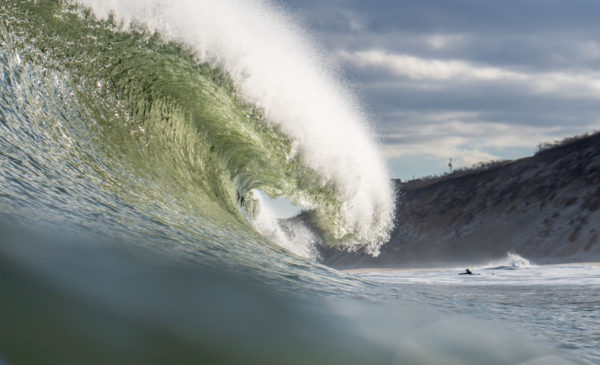
Cape Cod is a community connected as such. The storied New England region threads through North America’s story from its earliest colonization, whaling, the Kennedys, and generations of families who visit each year out of tradition and love for this stretch where land meets sea. And when that defining body of water experiences radical change, it reverberates through the community. Few changes to the shores of Cape Cod have been as unnerving as the dramatic growth of its great white shark population, where surfers have been dealing with the boom first, from the front lines.
HOW WE GOT HERE
The great white situation has unfolded over the last few years as if following plot points from Jaws. Scientists and locals began reporting more and more sightings as the gray seal population made a huge rebound, providing a veritable buffet off the Cape. Next, the public started taking real notice with a marquee sighting: when a massive great white cruised the swimming area at Nauset Beach in 2012. In August of that year, first blood was drawn when a shark bit a Boston man off Truro, Mass.
Later that summer, OCEARCH, a research project funded by a consortium of corporate brands (not research grants), tagged a 3,500-lb., 16-foot female great white off the Cape. Led by shark wrangler Chris Fischer, the team named her Mary Lee and put a tracking device on her dorsal fin. OCEARCH’s incredibly effective marketing team relayed her visits via Twitter and the ol’ girl built up a following of 130,000.
Mary Lee began turning up close to East Coast beaches and even staggeringly small bodies of water. The public was fascinated. Moral of the story: “Yes, there are sharks in the ocean. Yes, they come very close to humans. No, we are not on their menu.” The lesson was only slightly reassuring, especially for watermen and -women who believe in protecting wildlife from further harm. The toothiest of killers, the thinking went, prowl right into our backyards, yet have no interest in human meat.
But while OCEARCH was an effective means of that messaging, Boston University Marine Biologist-aquarist-photographer and Massachusetts Recreational Fisheries Program Manager, Dr. Greg Skomal grounded the qualitative evidence with a huge body of research. Skomal has been studying the Atlantic great white for four decades, documenting its dramatic return to the Cape. He has tagged hundreds of sharks, opting for scientific methodology with beacons and cameras that transmit recordings.
Then the encounters increased. In 2014, a shark overturned two women in kayaks off Plymouth, Mass. In 2017, a great white laid its teeth into a paddleboard. In the summer 2018, another chomped a swimmer, who doctors miraculously saved in a Boston hospital. By the fall of 2018, in the midst of hurricane swell season for the East Coast, a great white killed 26-year-old bodyboarder Arthur Medici in a grizzly manner at Newcomb Hollow.
Suddenly, the whole narrative changed. Apparently, humans, particularly surfers, might actually be on the menu or at least occasionally, a chef’s special.
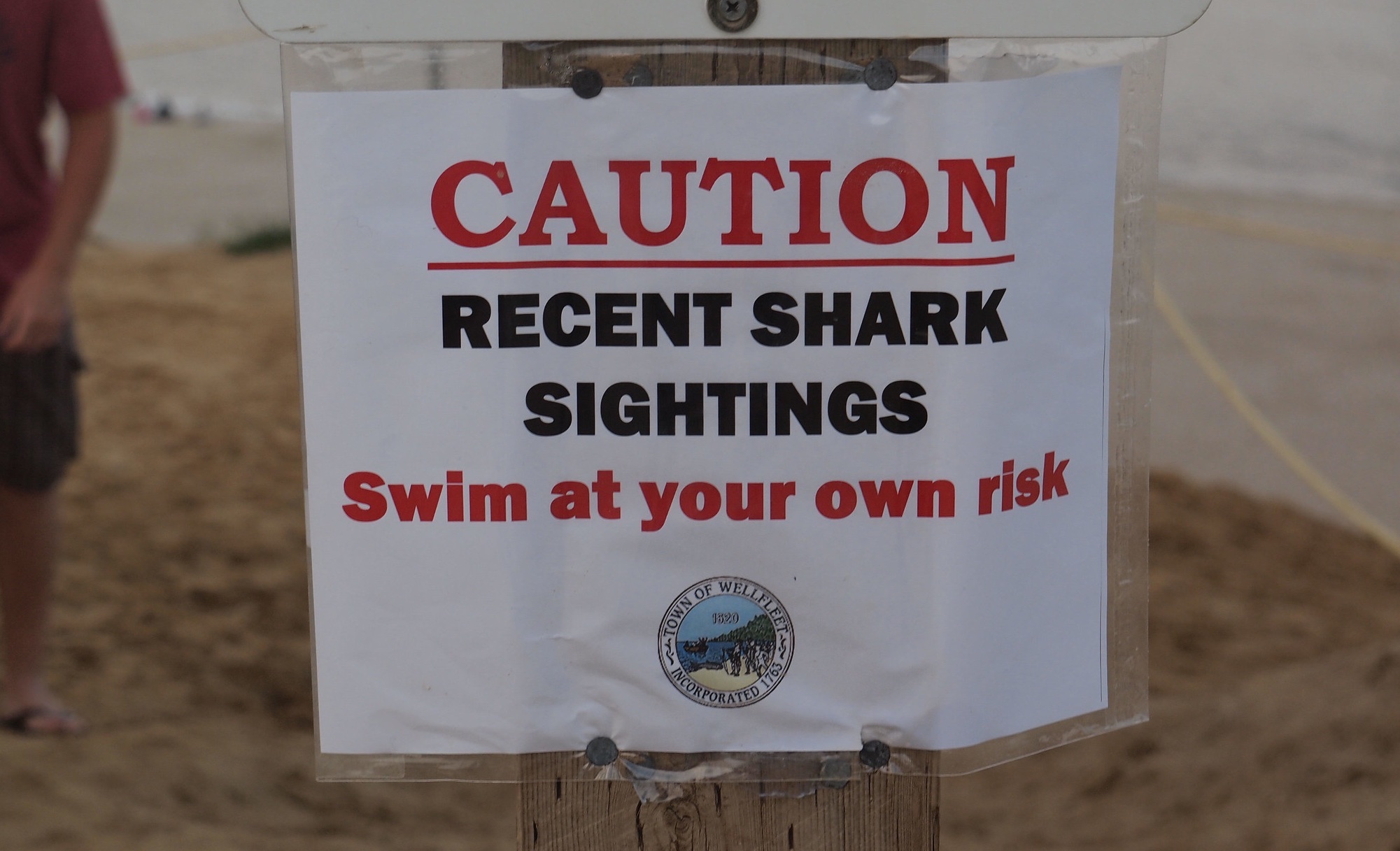
THE CAPE
To understand the immediate fallout of Medici’s death, you must first understand the Cape Cod surf experience. There’s been a year-round surf community here since the ’60s — one that doesn’t give a second thought to taking the icy North Atlantic plunge when the swell is pumping. From December to May, the ocean temp is 40 degrees or colder, and it’s not uncommon to surf consecutive swells when the air stays below freezing. On the warmest of summer days, the ocean only gets up to the low 60s, offering a sparring chance to don a lighter wetsuit or brave a chilly session in trunks.
Surfers in general are not terribly concerned with sharks, or at least not as preoccupied as the rest of society might think. We’ve all seen sharks while surfing, maybe bumped into a few. We are aware that the ocean is full of predators.
And as a surf community, Cape Cod was a lot like most: with a mix of a few revered legends, folks in their 30s and 40s who have their own groms, a healthy core of late teens and 20-somethings who still surf every day, all connected by a couple surf shops with varying degrees of street cred. The shark issue is stretching those connective tissues like never before.
Cape Cod native Mike Archer started surfing when he was 12 and devoted much of his life to it. The 46-year-old father of two is now a manager at The Boarding House, a longtime surf-skate-snowboard shop in Hyannis. The whole shark increase has become a controversial topic as regional news outlets constantly look for a sensational story (not exactly ideal press for a business that outfit surfers). Archer makes it clear that he cannot speak to everyone’s experience on the Cape.
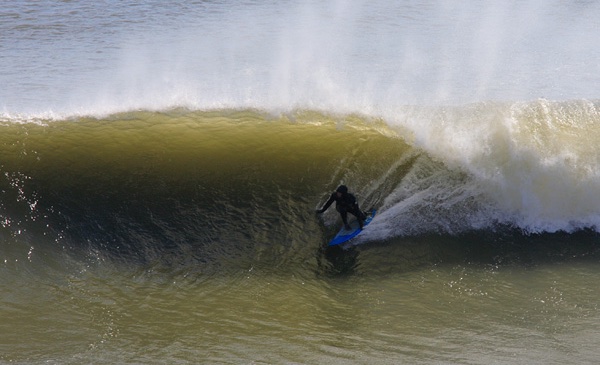
“My son is about to turn 14. I started him surfing when he was about 5. When he was 8 or 9, he’d be up and riding. He loved to surf in the summer and he was starting to get into the shoulder season,” says Archer. “Now, he doesn’t surf anymore during the peak season.”
Archer’s referring to the prime timeframe from August through October, when the Atlantic hurricane season goes into overdrive, bringing rare swell combined with the warmest water temperature. What used to be a celebrated season is now avoided by most. In a place where your wetsuit can freeze into a yoga pose in the bed of your truck, winter is now the preferred season.
For Cody DeGroff, a 28-year-old surfer, lifeguard and surf photographer from Chatham, the shark issue has been a factor for his entire adult life. When it comes to his passion for shooting from the water, he welcomes the colder water, so he can, “go out there looking like a seal and not have to worry about it.” But even in the winter, DeGroff admits he’ll seek out sandbars to stand as close to shore as possible.
Because off his willingness to shoot in that turbid, dark water in a hooded wetsuit and fins, DeGroff has become the noted photographer on the Cape. Still he won’t go in the water in the summertime without a board. “You feel a little safer on a standup board or a longboard,” says DeGroff. “Me swimming around with my camera is just too sketchy. In the month of August, sharks are seen every day. The Atlantic White Shark Conservatory uses a spotter plane. So when they fly up the coast, they will usually tell us when they are around. And they’re usually pretty close to the shoreline.”
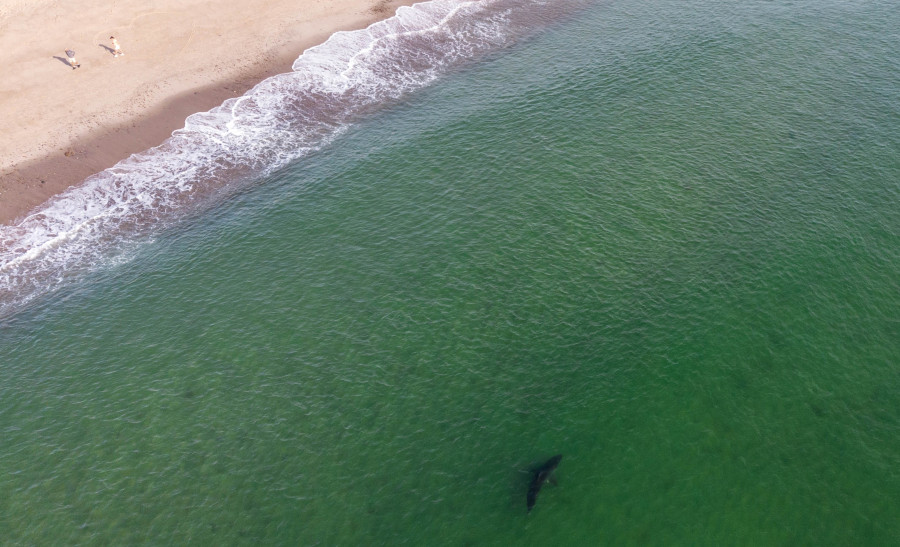
For years, Luke Simpson was the guy who would swim out to capture the goods on the rare occasion that the surf mags might want an epic East Coast shot. But Simpson, a biology teacher at Nauset Regional High School has not shot from the water in years.
“Honestly I don’t shoot in the water because there are no surf magazines to run the shots,” he admits, “But when it comes down to it, do I need that shot or does my kid need a father?”
Simpson is at a different phase of life than DeGroff. As a parent who thought he would raise his daughter in the ocean as much as possible, he will only wade onto the sandbar with her at low tide.
“Our limit is about three-and-a-half feet deep. Those things can’t get you in there,” he explains.
That limited range reflects the advice that Dr. Skomal gives beach-goers at the Cape.
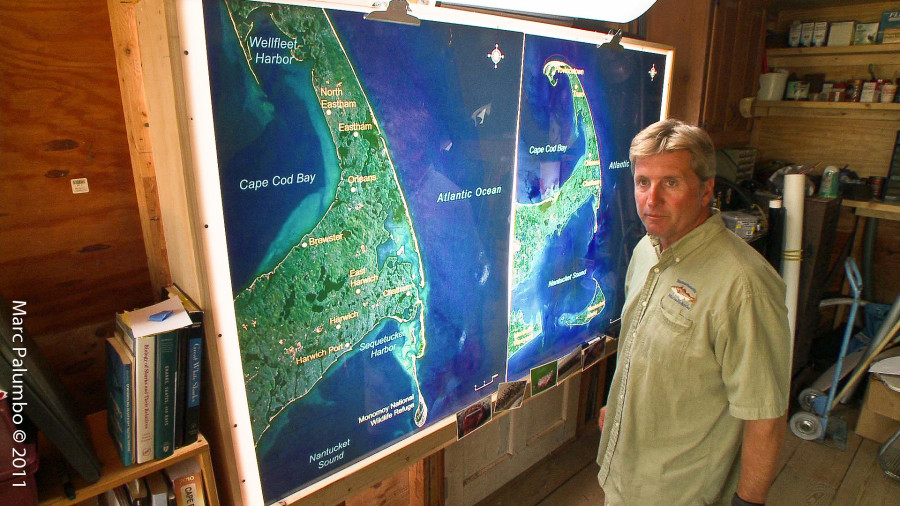
Great whites migrate, and, though the seals are year-round residents, Skomal’s research shows the sharks show up in greatest numbers in August and taper off into November. Cold has become king. By late fall, the ocean temps drop into the lower 40s and the sharks are thought to have mostly moved to other regions. Even then, locals like DeGroff will still hold off. He recalls a November session, running into a friend who witnessed Medici’s fatal attack, who talked him out of swimming to shoot. “She was like, ‘It’s just not worth it. They’re still around. Just wait a couple more weeks.’” DeGroff says. “It just had that weird feeling.”
Sometimes the wait pays off. The surf on December 15 was a bread and butter day for the Cape, head-high to overhead medium-period south windswell with offshore winds all day and barrels. Simpson had no problem missing out, opting to take his daughter hours away to Killington, Vermont where she skis and he snowboards.
DeGroff swam and tried not to think too much about it. Still, longtime Cape Cod surfer and shaper, Shawn Vecchione reported on Instagram that he got “bumped” while his friends saw a big shadow pass through the water.
CALL IT A COMEBACK
So what changed about Cape Cod, where a wayward summer gaze at the ocean can now reveal a massive apex predator breaching?
Cape Cod was historically a great white feeding ground, the seal population being the obvious draw. These tender morsels made a huge comeback several decades after the Marine Mammal Protection Act of 1972. Prior to that, certain Northeast fishermen had no problem offing seals that fed on the same fish they were out to catch. Furthermore, changes in New England’s commercial fishing regulations also meant less juvenile sharks were being killed as accidental bycatch.
So the math is simple: More great whites reaching maturity with a never-ending supply of seal sushi. Even if they’re not going after humans, there are going to be a few misunderstandings between species.
“It’s brutal. It’s completely changed my life. Everything was based on going to the beach with my family, whether it was one-foot longboard waves or an overhead swell,” explains Archer. “You start to weigh risk verses reward. I’m certainly not going to pressure my son to surf. And then you ask, ‘Am I being responsible by going surfing myself?’ There are a lot of variations in attitude but I feel like the greater number of surfers are shying away from it.”
Ten years ago, on a summer day, there might have been hundreds of surfers up and down the Cape, longboarders and short, enjoying August groundswell. Now, aside from some hard-core younger guys, you will barely find anyone out past the sandbar. The ones who do are now riding SUP boards.
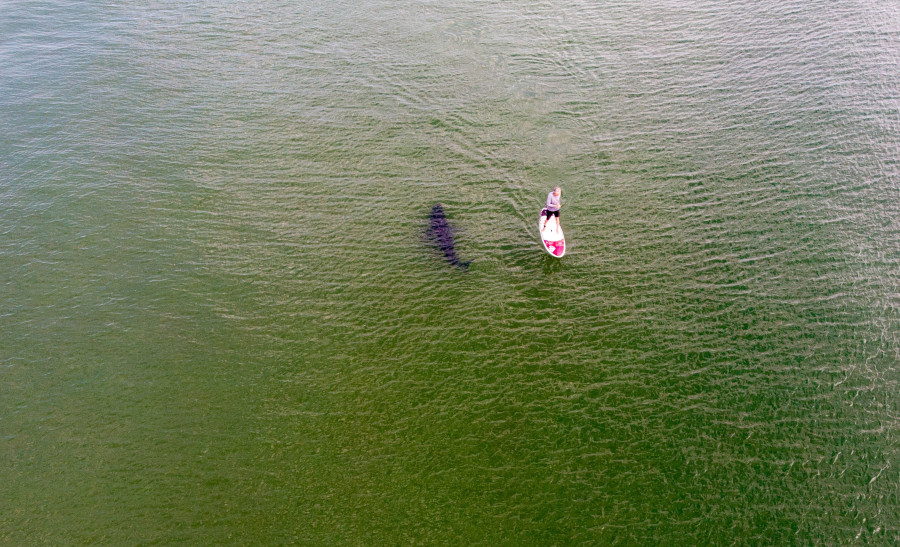
Whereas surfers used to look for those empty spots, they now surf in groups for safety. They monitor the shark apps and try to minimize the risks. And that’s primarily after November. Many surfers have taken a ‘Stop the Bleed’ course specifically for shark attacks.
When there’s a considerable swell, local surfers will travel to New Hampshire or Rhode Island, which certainly doesn’t help with the crowd situation around New England. Mountain biking is becoming huge. Surfers definitely talk about moving off the Cape. Some already have.
CHANGES ON LAND
The Cape Cod National Seashore’s own numbers show that over 4.5 million individuals visited in 2015. There was a decline by 2017, and last year, the number dipped below 4 million for the first time in 10 years.
As far as business, Archer says The Boarding House is still doing OK, although sales of 3-mm wetsuits and beginner surfboards are way down.
“A tourist family will come into the shop. One of the kids will look at the surfboards and say, ‘these are cool.’ And some other family member says, ‘You’re not getting one of those. You’ll get eaten by a shark,’” Archer explains. “I hear that every week in the summer.”
Surf schools, which are now a fixture of every summertime coastal town, are no longer permitted by the town of Orleans.
Now there’s a larger conversation about how the great whites are changing the economy of the Cape. Surfers represent a small number of visitors, though local waverers tend to work in tourism-related industries. How long will people keep returning to a beach where they can’t swim and recreate? Fortunately for this coast, the market is not as based on families frolicking in the surf for hours like states just south of Massachusetts. But people do love to surf and swim in the summer.
Heather Doyle represents the group Cape Cod Ocean Community, which she claims has over 1,000 members, mostly people who return to the Cape’s beaches year after year. The group’s mission, while not underestimating the danger of the sharks, is to embrace the ocean lifestyle that brings them here in the first place.
“It’s a massive group of citizens who are simply not satisfied to just stay out of the water. We’re not going to just accept only going to waist deep,” Doyle explains, “When families get pulled out of the water on a 90-degree day, they just stop coming to the Cape. I know these legacy families who have been on the Cape for generations and they feel their kids are being robbed of the summers that they grew up enjoying.”
Doyle believes that technology and communication can keep people safer. She has no delusions about the presence of great whites but feels the towns and the National Seashore have basically been paralyzed by fear of litigation. Her group advocates for drones, sonar, surveillance flights, information and anything that can give people the confidence to enjoy the water again. She feels that the local authorities have mostly just done nothing.
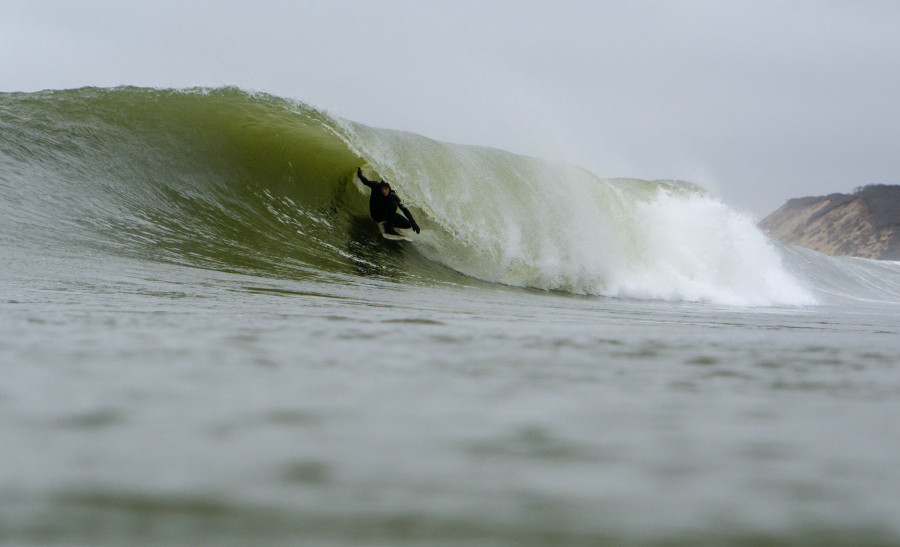
For now, shark curiosity seems to be making up for some of the visitors seeking beach fun elsewhere. But rental markets are fluctuating and, like much of the East Coast, the Cape is keenly reliant on the tourism dollar. Doyle says the Eastham Chamber of Commerce is claiming a 30 percent drop in vacation rentals in recent years.
Many maintain hope that there’s an answer to the problem. Far from the views of Barnstable County Commissioner Ron Beaty, who has proposed killing the great whites with baited and hooked drum lines around popular beaches, they’re hoping for scientifically proven deterrents and detection methods.
“I think it’s all about liability and money,” says Archer. “Our leaders are gun-shy about employing experimental methods, fearing something could go wrong and they will be on the hook for it. But by that logic, why do we wear seatbelts or read the warning on medication? They’re all things put in place to keep us safer, but don’t guarantee our safety.”
“We can’t throw in the towel,” he adds. “Our ocean-going way of life on the Cape is just too important, from casually enjoying a day at the beach right down to the nuts and bolts of our local economy. It all matters.”
But as for the future of the Cape Cod surf community. Some will move. That core of young chargers will still surf year-round until something else happens. But what about the next generation?
“There are no young surfers now,” says Archer, “As people get older, I don’t know who’s going to fill in behind them. But there weren’t any kids getting their first surfboard for Christmas on the Cape this year.”
For access to exclusive gear videos, celebrity interviews, and more, subscribe on YouTube!





Recent Comments